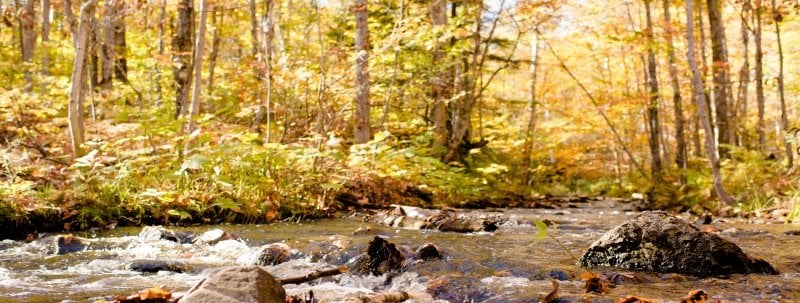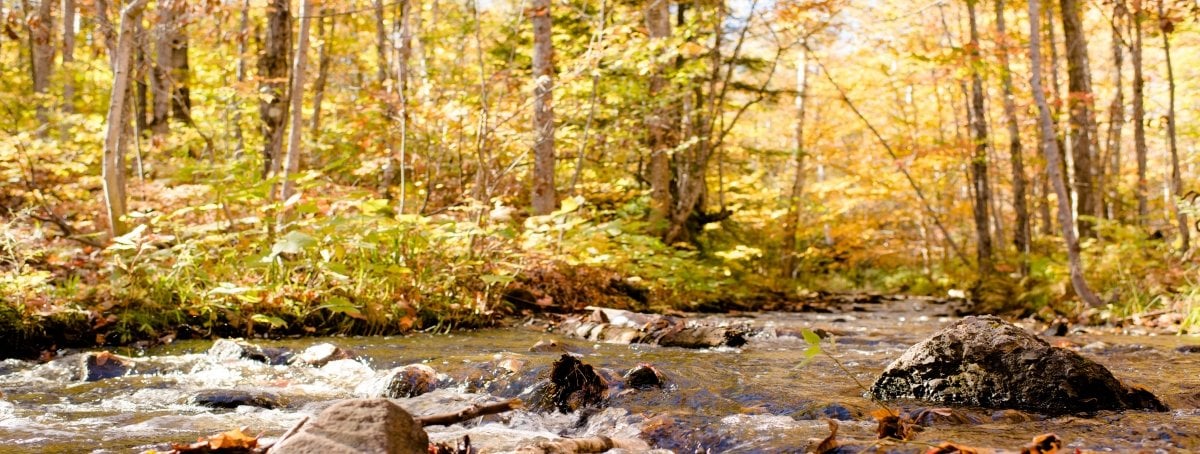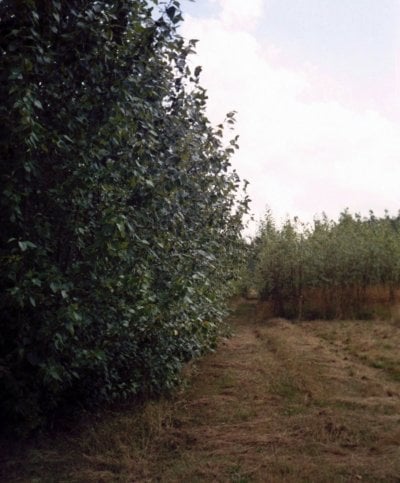When it comes to planting trees for bioenergy feedstocks, there are tradeoffs to be made.
As energy sources increasingly shift toward renewables, it’s important not to lose sight of the fact that energy production always comes with tradeoffs. Modeling the outcomes of those tradeoffs can help natural resource managers and policymakers create informed decisions in energy development.
Jumping to Conclusions: An Unscripted Series
Flip to the findings. Skip the wind-up and get to the hard-hitting applications and impact.
Azad Heidari, a civil engineering doctoral candidate at Michigan Technological University, analyzed how biofuel poplar plantations in Wisconsin affect nearby water bodies. Heidari used a watershed model that combines hydrology and plant growth models calibrated to local conditions to investigate tradeoffs between biomass production and impacts on water flow and quality.
Heidari notes that using an interdisciplinary modeling approach allowed the researchers to come to much more holistic conclusions than they otherwise would have.
The work, coauthored by environmental engineers Alex Mayer and David Watkins, was published this summer in the Journal of Hydrology in the article, “Hydrologic impacts and trade-offs associated with forest-based bioenergy development practices in a snow-dominated watershed, Wisconsin, USA.”
Decisions and Consequences
In any sort of energy development, priorities must be set. Growing corn for ethanol replaces a food crop in the same field. Tree plantations might displace pastures for livestock. It’s up to resource managers to determine which tradeoffs they can live with. Other Michigan Tech researchers also study energy production siting, such as replacing tobacco crop fields with solar farms and methods of harvesting renewable energy sources in a way that don’t significantly alter ecosystems.
In the case of planted poplar for biomass feedstocks, the main tradeoff is water usage.
“Poplar trees have a significantly higher water use during the growing season compared to the existing forest land,” Heidari said. “Planting poplar in over 70% of a typical watershed in northern Wisconsin would decrease the average streamflow up to 25%, and during the low flow months of July and August, up to 50%. These streamflow reductions could result in degradation of aquatic ecosystems and greater competition for water use.”
Heidari used the Soil and Water Assessment Tool (SWAT), frequently used by hydrologists, to test 70 different poplar cultivation scenarios to see how they played out at the watershed scale. He discovered that the impacts to streamflows could be partially mitigated by management techniques.
Planting density and harvest timing can reduce negative impacts. A properly managed poplar plantation using a high-density short rotation can produce greater biomass with smaller environmental impacts, including careful use of fertilizer to stimulate tree growth and minimize fertilizer loading that could lead to water quality degradation.
“The idea was if you plant at a higher density, there will be more water use. But what we found was the opposite,” Heidari said. “If you cut the trees down when they’re young, before they become too big and have high water use relative to annual growth, you can control the water use.”
Heidari said the model that produced the greatest biomass feedstock yield planted 1,100 trees in 100 square meters, but were harvested after five years. The 1,100 trees did not use more water in their growth than a simulation with 11 or 111 trees in the same size test plot because of how soon they were harvested, compared to later harvests in the lower density plantings.
Branching Out with Interdisciplinary Models
“There’s no obvious best solution because as you increase the yield and increase the bioenergy production from the feedstock, you have to use more water,” said Alex Mayer, professor in both the Department of Civil and Environmental Engineering and Department of Geological and Mining Engineering and Sciences.
Grants and Funding
National Science Foundation – Partnerships for International Research and Education (OISE-PIRE #1243444).
Mayer said studies like this one are important because they provide a baseline of efficiencies to compare to fossil fuels, as well as provide a low-cost glimpse of future energy potential.
“That’s the power of using a model; you can explore how well you can manage a system,” he said. “We know there will be impacts, and the model shows us what’s the flexibility in managing those impacts.”
Watkins, a professor of civil and environmental engineering, noted, “In the popular literature, you see strong opinions about bioenergy — whether it’s absolutely a thing of the future for sustainability, or it’s not sustainable and we’re cutting down and burning all the trees. Bioenergy is really neither of those extremes. Modeling helps us understand and manage adverse impacts.
“A lot of watershed models we use in engineering do not include a detailed understanding of plant growth. SWAT was one of the few options for watershed scale hydrology that included plant growth,” Watkins said.
Next Steps
Heidari’s interdisciplinary approach to the SWAT model has produced benefits beyond the scope of his poplar and water study. He is working with the model developers to improve SWAT itself to better understand land management’s impacts on watersheds.
“This is a step toward improving our knowledge about biofuels and the related hydrology,” Heidari said. “Biofuels are important because energy has always been important; economies are dependent on energy.”
Heidari is extending his research on biofuel feedstocks by studying the growth of and water consumption by eucalyptus in Argentina and oil palm in Mexico. He will make similar recommendations on how best to manage these trees to maximize energy production and minimize water impacts.
Michigan Technological University is an R1 public research university founded in 1885 in Houghton, and is home to nearly 7,500 students from more than 60 countries around the world. Consistently ranked among the best universities in the country for return on investment, Michigan's flagship technological university offers more than 185 undergraduate and graduate degree programs in science and technology, engineering, computing, forestry, business, health professions, humanities, mathematics, social sciences, and the arts. The rural campus is situated just miles from Lake Superior in Michigan's Upper Peninsula, offering year-round opportunities for outdoor adventure.







Comments